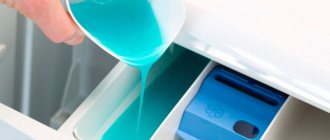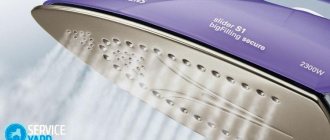A juicer is important for a housewife if she takes care of herself and her family. A healthy lifestyle has thoroughly entered our everyday life, and with it new devices of various types have appeared. Some people use these devices for processing crops, others in everyday life. And the requirements for such units are growing. How to choose a juicer, what criteria are important and what the characteristics mean - read the article.
A juicer for home is a must.
Types of juicers
Based on the extraction method, juicers are divided into centrifugal, auger, citrus and combined. Each type has its pros and cons and is aimed at specific tasks.
Centrifugal
Centrifugal machines work quickly. Save time and make a lot of juice in a short period of time. However, the sieve becomes clogged with pulp, it needs to be cleaned; soft berries and fruits cannot be squeezed out properly; due to the heating of the parts, a sour taste appears in the juice.
Juicer for home.
Screw
Screw devices are gaining popularity. And all because they work on the principle of cold pressing. They work slowly, which allows you to squeeze out more juice. Since there are no high rotation speeds, there is no heating and oxidation of metal parts, there is no aftertaste in the juice, and the devices themselves are quiet. Squeezes soft fruits, herbs, sprouted grains; if necessary, you can press oil from nuts. There are vertical and horizontal models.
Auger juicer.
For citrus fruits
Juicers for citrus fruits have an advantage over others when squeezing citrus fruits. It is enough to cut the fruit in half, press it on a rotating cone and the juice is ready. There is no need to peel the skin and divide it into slices, but the seeds and cake will remain on the mesh. In automatic models, the machine will do everything.
Citrus juicer.
Combined models
Combined options are suitable for those who need different spin options. More often, such a unit is a centrifugal juicer with an additional attachment for citrus fruits.
Criterias of choice
When choosing the best juicers for your home, you need to decide what your goals are. Of course, there are main criteria by which selection is made. You need to decide for yourself what is important and what you can close your eyes to. The more functions a device has, the more expensive it is. On the other hand, if you need to squeeze juice only from citrus fruits, why use a unit that squeezes juice from greens.
When deciding which juicer to choose for your home, attention is paid to such parameters as the power of the device, its type, and what material it is made of. Each parameter affects certain indicators of the unit.
Trademark
The manufacturer's name is the first criterion on the list. A serious manufacturer that has established itself in the market invests a lot of money in developing new technologies and maintaining the production of quality goods. Therefore, by selecting products from well-known brands, we implicitly insure ourselves against low-quality equipment.
The popularity of a manufacturer is assessed by its sales in a certain segment and brand recognition. In Russia, such manufacturers in the juicer segment are Bosch, Bork, Braun, Moulinex, Philips, Tribest. Each company on this list is known for quality and the skill of its engineers and designers. The equipment not only copes with the tasks, but also fits into the interior of the kitchen.
Material
Both the body and the working parts of the juicer can be made of either metal or plastic.
A metal case will add cost and weight to the product, but in terms of durability and presentation, such a device clearly wins. The plastic case is easy to clean, but does not look as stylish. Although modern plastic will fit into the interior of any kitchen.
The working parts are not made of metal, these are filters, connecting sleeves, a juice reservoir and the like. Of course, metal filters will last longer, but they also cost more.
Combined materials.
Speed
Speed is as important as power. It depends on how well the spin will be done. In citrus and auger juicers it is small; here, 50 to 150 rpm is enough. But for centrifugal units this indicator is very important. The higher the rotation speed of the separator, the more juice the device will squeeze out, the drier the cake will be.
Focus on power
Power is an important criterion. But, for each type this indicator is different. For example, for citrus juicers, a power of 50-100 W is sufficient, there is no high rotation speed, and there is no need for great effort. Screw devices should already have more power, it will be in the range of 200-400 W, and centrifugal devices usually have a power of 500 W and above. There are models with a power of 2000 W.
The characteristics of the juicer itself do not say anything; you need to weigh everything individually. When using the device, the electric motor heats up. If for the selected type of device it is not powerful enough, it will fail faster, or it will need to be cooled frequently. For the consumer, this means that a low-power unit is used when it is used infrequently and for preparing small portions of juice.
The more powerful the device, the more durable, more productive, more stable it is, but also more expensive, and also has larger dimensions.
We remember convenience
The more convenient the device is to use, the greater the comfort of working with it. When selecting a juicer, attention is always paid to the little things that will make it comfortable to use.
For screw and centrifugal devices, the size of the neck is important. The larger the neck, the less you cut the raw materials.
One of the options is cleaning after use. A clear plus when all parts are easily removed and put back in place. It's even better if it's dishwasher safe.
There are models of juicers that have a built-in container for collecting juice. For one person it will be convenient, but for another it is better to substitute his glass. Selection is based on needs. If the device is for an apartment, to prepare juice for an average family, then a capacity of 0.5 liters is enough. If you need to process crops from your garden, you need a larger container volume.
To each his own, but there are options for everyone.
Unit type
As we have already figured out, there are 4 types of juicers:
- centrifugal,
- combined,
- screw,
- citrus.
Screws can be horizontal or vertical.
Each type has its own characteristics. Next, we will take a closer look at each type, with an overview of the models.
Kinds
Juicers are used to make fruit and vegetable juices. Such drinks retain all the benefits of the products and are in demand in restaurants, cafes, canteens, and children's institutions. Thanks to this equipment, juices are obtained quickly and in large volumes. With this modern equipment, chefs and baristas spend less time preparing healthy drinks. Moreover, manufacturers are constantly improving these machines. Today you don’t need to go through complex manipulations to get a liter of a vitamin drink. It is enough to put fruits (vegetables) in the machine, turn on the device and do other things.
Juicers are classified according to several principles:
- By type of control: manual, mechanical, electrical.
- By areas of use: household, professional and industrial.
- Intended use: for different types of products (citrus fruits, hard vegetables and fruits, for stone fruits and universal squeezers).
- By mode of operation: centrifugal and screw.
To understand which juicer you need, you need to learn more about each variety.
Manual, mechanical, electric
The first type of instrument is manual, and is now used less and less. This is a simple device without additional elements, switches or drives. The process of squeezing juice occurs by manual squeezing. To get a glass of drink, you need to make every effort. This device is familiar to many. It is used only at home.
Mechanical are cast iron or metal devices that operate using an internal squeezing mechanism, without electricity. An example of such models are squeezing meat grinders, in which a fruit is placed in a container, twisted with a mechanical handle, and the juice is poured into a glass from the outlet. These devices produce more finished product than manual ones, but the procedure is still inconvenient and long. In addition to manual scrolling, it takes a long time to wash the spiral from any remaining pulp. Such juicers are also not used in industry.
The most popular are modern electric juicers. The principle of their operation is similar to mechanical, but you don’t need to twist anything with your hands. The squeezing procedure is fully automated. The mechanism operates thanks to an electric motor. These machines are controlled by buttons or switches. The most modern options have touch or digital panels on the cases for selecting and launching programs.
Electrical appliances have the highest performance and work quickly. Several servings of fresh drink can be obtained in a matter of seconds. These are the juicers that most catering establishments use. They cost more than manual and mechanical ones. But the price depends on the feature set, performance and brand.
Mechanical juicer
Electric juicer
Household, professional and industrial
Juicers for household use can be mechanical or electric. These small-sized devices can provide healthy drinks to household members in the morning. Their productivity is low: from one to four glasses of juice. Well, the price is appropriate.
Professional juicers operate much faster and produce many times more finished juice in one cycle. Such units are installed in bars, cafes, restaurants, and children's institutions. The prices of such equipment are also higher. But the performance is appropriate. You can choose a model of small, medium or large dimensions, depending on the needs of the establishment. Modern professional squeezers have a beautiful and stylish design, since very often the process of creating a drink is carried out by the barista in front of the client. And equipment with an attractive appearance helps to increase the demand for freshly squeezed juices.
Industrial juice extractors are the most expensive, but also the most productive equipment. It is installed in production workshops and large processing enterprises. Such machines are designed to operate continuously for several hours. They are capable of processing more than 100 kg of vegetables, fruits or berries in one cycle. Most often, these are universal machines, since for large workshops there is no point in installing separate equipment for different types of products.
Professional juicer
Industrial juicer
Juicers for citrus, tomatoes, hard, stone fruits and vegetables or general purpose
There are specialized and universal types of squeezers. Citrus models are purchased for processing oranges, tangerines, grapefruits and lemons. These machines have low power. After all, citrus fruits themselves are soft and juicy. They do not require much mechanical action to obtain juices. The power of these devices does not exceed 40 W. This is enough for a juicy citrus structure.
The same is true for a tomato juicer. Its power is quite low.
Equipment for squeezing hard vegetables and fruits has great power, since it requires a lot of effort for processing. These squeezers have a strong engine, and all elements are made of steel or metal. This is how apple, carrot, and pumpkin drinks are made. When choosing equipment for solid products, keep in mind that it should not only have increased power, but also have a reliable filtration system. Since all skins and small particles that cannot be processed must be quickly removed from the mechanism. Filters also remove pulp from the liquid. The result is a clean, light drink. If you choose a machine without filtration, you will have to be content with juices with pulp. The filter sieve can be in the form of a cylinder or a cone. Cone-shaped elements first grind solid ingredients into a pulp using a built-in grater, only then does the liquid squeeze out. Such devices cope with spinning more efficiently. And the finished drink turns out crystal clear.
Stone models are used mainly for processing berry crops: sea buckthorn, chokeberry, currants, gooseberries and others, from which it is impossible to remove seeds with separate devices. This technique squeezes the berries and removes solid stone particles into the filter compartment.
Universal types of juicers are expensive. But, having such a machine in the kitchen of an establishment or in a workshop, you don’t have to spend money on additional devices. This squeezer can handle any product, even herbs and nuts. This is powerful, high-performance equipment.
Modern universal models are endowed with great capabilities. They are fully automated, have self-cleaning programs, elimination of foam and pulp in juices, etc.
Tomato juicer
Juicer for hard fruits and vegetables
Centrifugal and screw
Based on their operating principles, there are differences between centrifugal and auger juicers. The first type is also called rotary or centrifugal. They work using a rotating chopping blade. The speed of the cutting element can reach 3,500 revolutions per minute. The contents of the centrifuge are crushed, and centrifugal forces press the products against the walls and extract liquid from them. The cake settles in the filter, and the juice seeps into the container. Centrifugal equipment is expensive. But it is ideal for business.
The auger variety of juicers is less popular when producing juice in large volumes, since these machines are most often manual. Their price is not high. The principle of operation of the screw system is pressing. That is, the user independently presses the auger and releases juice from the products. There are machines with one or two augers.
Modern screw squeezers are automated. Inside such a device there are augers, which, when started, grind the mass of vegetables or fruits. As a result, the juicy liquid is squeezed out.
Centrifugal juicer drum
Auger juicer
The best centrifugal juicers
These models are better for processing hard fruits. Premium juicers will cope well with the task of processing a large number of fruits in a short time.
Kitchenaid Artisan 5KVJ0333EOB with pulp regulator
Kitchenaid Artisan 5KVJ0333EOB.
For a centrifugal juicer, 500 W of power is not enough. But thanks to engineering solutions, it copes with its tasks. The wide neck is convenient for use, and the metal body protects the device.
There is an adjustment of the amount of pulp, 2 operating speeds and 10,000 rpm. It is due to this speed that the unit will operate steadily, but noisily.
Philips Viva Collection HR1837: the most convenient to use
Philips Viva Collection HR1837.
Compact unit with 500 W power. This is quite enough to squeeze juice from fruits, vegetables and even berries. The dimensions are almost 2 times smaller than similar devices from the same company, which is good for storage. The Quick clean cleaning system will help clean the device in 60 seconds.
The metal body looks presentable. There is a “drop-stop” function and a tray for loading berries, but the neck for supplying raw materials is narrow, only 55 mm. Due to its compact size, juice is supplied into a glass.
The device is easy to disassemble, clean and its parts can be washed in the dishwasher. It’s convenient that the cake storage is transparent and you can see the degree of its filling.
Moulinex Juice Express JU550: compact and inexpensive
Moulinex Juice Express JU550.
Powerful juicer with 800 W output. Not big, but enough to operate sustainably and make juice for the average family. Moreover, the volume of the juice bowl is 0.8 liters. The loading neck is 75 mm in size, also an average option among household appliances.
The functionality includes automatic pulp ejection. This makes it possible not to stop the device every time for cleaning. The stop-drip function will close the drain hole when filling the bowl and allow you to pour out the juice to continue working. Conveniently, the parts can be washed in the dishwasher.
Good build quality, along with rubberized feet, ensure quiet operation of the device. A wide neck, good spin quality and ease of cleaning make it comfortable to use.
Auger juicers
Screw juicer Hurom HU-400
This is the second type of model, which is less popular. Here the technology and design are fundamentally different: juice is extracted using augers rather than a centrifuge.
We can say that there is a real war between these two types of juice extraction models for market leadership, and therefore...
These models have much less power (200-300 W versus 800-1000 W), but are not inferior in performance. They are less noisy, one might even say quiet, and have ways to extract juice even from berries with seeds and greens (typical of some models). It is generally impossible to try to squeeze juice from berries with seeds in centrifugal models, because... this can damage their disc and severely clog the filter.
Another characteristic advantage of auger devices is much less contact of juice with air during its extraction. It also does not heat up, which preserves the beneficial properties of the product. And since there is less contact with air, the juice oxidizes much more slowly, but it is, of course, impossible to say that oxidation does not occur at all.
Everything sounds simply fabulous until we talk about the shortcomings of these models. The first of them is the limited choice of products. For example, you will not be able to extract juice from soft apples. You will simply end up with purees (well, or baby food) instead of pure juice. Of course, there will be more of this juice due to the proportion of pulp in it. So, if you are planning to choose a juicer for hard apples, of which you have countless varieties in your garden, then you can choose an auger model. And if you intend to extract juice from soft varieties, then buy centrifugal juicers.
Depending on the type of design, screw devices can be either vertical or horizontal. The latter are very specific; they perfectly squeeze juice from various greens and grains, but they cannot extract juice from fruits or vegetables. It is better to have a vertical model at home, because... it's more versatile.
The best combination models
The juicer is universal, allowing you to not have 2 units in the kitchen. For those who need both a juicer and a blender.
Bork S810: semi-professional squeezer-blender
Bork S810.
A juicer and a blender coexist in one, almost professional, device. 1800 W power is quite large for both a juicer and a blender. 5 speeds and a high-quality filtration system give room for creativity. The wide neck is easy to use.
If you change your mind about making juice, make a salad. There are no dead zones in the blender and the spherical bowl will prevent vegetables from sticking to the walls. The volume of the reservoir for juice is 1200 ml and for pulp 3500 ml are significant. The case can be metal or plastic.
Novis Vita Juicer with automatic speed selection
The quiet operation of the stylish device with a power of 240 W is a merit of high-quality assembly. The juice is squeezed out decently. The design is original and this is the stumbling block in the reviews. The main inconvenience is that every 200-250 ml of juice you need to wash the sieve. It’s also not very convenient to disassemble and wash everything else.
Novis Vita Juicer.
The best horizontal juicers
The models are named horizontal due to the location of the spinning units. This has its advantages, but more often the neck is narrower than that of vertical ones.
Sana EUJ 707: universal food processor
Classic horizontal model. The power of 200 W is worthy of respect. Adjusting the amount of pulp is a nice addition. There is a pasta attachment and a sieve for the homogenizer. A rotation speed of 70 rpm is sufficient for operation. Reviews say that the model is indestructible. The metal body makes this model stand out.
Sana EUJ 707.
Tribest Green Star Elite GSE 5000: the best green juicer
The horizontal twin-screw juicer with pulp control can do more than the rest. The power of 200 W will grind everything the housewife needs. The case, although made of plastic, looks decent. Includes a 0.9 liter glass. The 1.4 meter cord is pleasantly surprising. It is enough to reach the outlet without an extension cord.
The set additionally includes an attachment for making breadsticks, chopping meat, sorbets, pates and several other options . The device is multifunctional. Works well with greens. The juicer is ideal for making smoothies. The price is high, but the device is worth it.
Tribest Green Star Elite GSE 5000.
The best vertical auger units
The screw is located vertically, the auger grabs and crushes the fruit. This type of juicer requires almost no pusher.
Kenwood JMP 802SI: omnivorous juicer
Kenwood JMP 802 SI.
The power of 240 W means that this device will grind anything. A metal screw can help do this. A liter tank for pulp and the same for juice will allow you to easily make juice without stopping for the whole family. Reversing makes the task easier if a hard piece gets stuck.
A full range of different overload protections and automatic blocking show the serious approach of the engineers. Only the body is made of plastic.
Hurom Alpha Plus HZ SBE19: a true all-rounder
Vertical juicer with one auger and 150 W power. Quite decent power allows you to work uninterruptedly and normally squeeze juice without pulp, even from solid products. The steel case reliably protects the device.
This is premium. It works quietly, squeezing the fruits, making juice of excellent quality. Includes a nozzle for citrus fruits and 2 meshes. One for juices, the second for smoothies. Plus an attachment for making pasta, baby food or plant-based milk.
Hurom Alpha Plus HZ SBE19.
The best citrus presses
The simplest device. A ribbed attachment is placed on the electric motor shaft. It rotates and squeezes out the juice from the pulp of citrus fruits.
Bosch Vitastyle Citro MCP72GPB: citrus press with two juice collectors
Bosch Vitastyle Citro MCP72GPB.
Motor power 40 W. There is a built-in glass juice container for 1 liter, you can serve the juice in a glass. The pulse mode helps to better process the fruit. The juicer is easy to disassemble and can be washed in the dishwasher.
During operation, the carafe splashes with juice, but the cost compensates for this defect. The glass container can be used as a carafe for short-term juice storage; it has a lid.
Braun CJ 3000 is a simple and not capricious juicer
Juicer in classic design and design from Braun. The plastic body is easy to clean, the container is transparent with markings on the volume of liquid. The volume of the tank is 350 ml, there is a cone on top of the jug.
The device's power of 20 W is small, but the speed of 59 rpm is enough for normal operation. If an overload occurs, the device will automatically turn off. There is a regulator for the amount of pulp of 5 degrees of consistency.
Rubber feet do not transmit vibration to the working surface of the table and keep the juicer well from moving horizontally. A good bonus from the manufacturer is that the cord is hidden in the housing.
Braun CJ 3000.
Citrus juicers
Braun MPZ9
A small and lightweight citrus juicer from a trusted German manufacturer. Simplicity and rigor of design are in the best traditions of Germany. Control type – electronic. The model is equipped with a dust protection cover and a removable transparent plastic tank with an optimal volume of 1000 ml. For convenience, there is a measuring scale on the walls. The number of speeds is one, but there are two modes: pulse and reverse. The first speeds up work by a few seconds, and the second makes it possible to get the maximum freshness from each piece. The product can be washed in the dishwasher.
The disadvantages include a large amount of pulp, which is why you have to rub it through a sieve. It will be problematic to squeeze large fruits using the Braun MPZ9 model. In addition, the maximum power consumption is only 20 W, but users note that this is enough when the unit is used infrequently.
Caso CP 300
Ideal device for medium-sized fruits. The unit body and strainer are made of stainless steel. The handles are pleasant to the touch thanks to a rubber-like paint coating (Soft-touch). The legs are rubberized, allowing you to maintain a stable position while working. For a juicer designed for citrus fruits, the Caso CP 300 model boasts a good power consumption (160 W). The device is easy to clean and does not collect cake. There is a “drip-stop” function that allows you to avoid the finished juice dripping onto the table. Unlike other devices of this type, it can even handle large ingredients (for example, grapefruit).
Among the disadvantages are the slow operation (compared to centrifugal juicers) and the short length of the power cord (1 m).
Bugatti Vita
High-quality and compact citrus juicer . Original appearance and ease of operation are the main advantages of this model. Thanks to its unusual design, it fits perfectly into modern kitchen interiors (does not take up much space). It is characterized by safe and high-quality materials (cast zinc alloy ZAM and chrome-plated ABS), which guarantees a long service life. The juice reservoir is built-in, the volume is optimal (600 ml). The unit’s leg makes it possible to rotate the body by 60°. This ensures ease of use.
The model has one drawback - its high price. But she completely justifies herself.
conclusions
In retail outlets there are dozens of models of equipment of varying functionality and price, both from well-known manufacturers and those new to us. It is important to decide on the purpose of the purchase.
If you need freshly squeezed orange or grapefruit juice, then the choice is obvious - this is a citrus juicer. An option for a centrifugal machine when you need to quickly make a large volume of juice from hard fruits. And the auger technology is designed for harvesting and squeezes out soft fruits.
Previous
JuicersWhat is an auger and centrifugal juicer
Popular manufacturers and their best models
Trusted brands supply the market with high-quality equipment for any purchasing power.
Scarlett
The Scarlett brand produces screw and centrifugal equipment with a long service life. The models are made of plastic with stainless steel cutting elements, a “stop-drop” option and direct juice supply. Scarlett SC-JE50S05 is used for soft raw materials, and SC-JE50S35 is used for hard raw materials.
Bork
The company presents juicers in a stylish metal case with 5 spin modes, a wide loading chute and a large capacity for the finished drink. Some models have a blender function added. The best universal model Bork S810, citrus press Bork S800.
Philips
The company from the Netherlands guarantees the best electronics of the product, a powerful engine and regulation of juice saturation. The leaders are considered Philips HR1858/55 and HR1832
Moulinex
It produces stylish, high-quality equipment that both processes the harvest and prepares small portions of fresh juice every day. Proven options Moulinex JU585G3E, JU385H30.
Kitfort
The development uses low-speed spin technology. As a result, the fresh juice comes out thick and rich, and no foam forms. Kitfort KT-1101 and KT-1104 even squeeze out sprouted wheat and nuts.
Bosch
The brand from Germany produces juicers that are famous for their reliable and durable service. They are equipped with programs for hard and soft fruits, protection against flying splashes. Bosch MES4000 and MES4010 are named the best.
Redmond
The company produces popular budget devices with direct juice supply and automatic pulp ejection. The size of the neck allows you to load vegetables without slicing. The best-selling Redmond RJ-M920S and RJ-M906.
Hurom
A company from South Korea produces auger juicers. The developers have added a slow spin option, which preserves the maximum beneficial substances of the raw materials. With the Hurom technique it is easy to extract vegetables, fruits and nuts.
Polaris
Developers worry about details. For user convenience, there are rubberized feet, a glass fill level indicator for preparing cocktails, and different speed modes. Polaris PEA 0829 and PEA 1122 AL are popular.











